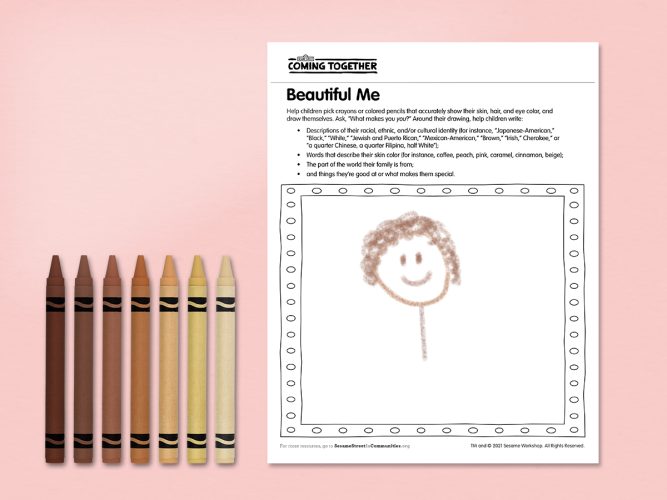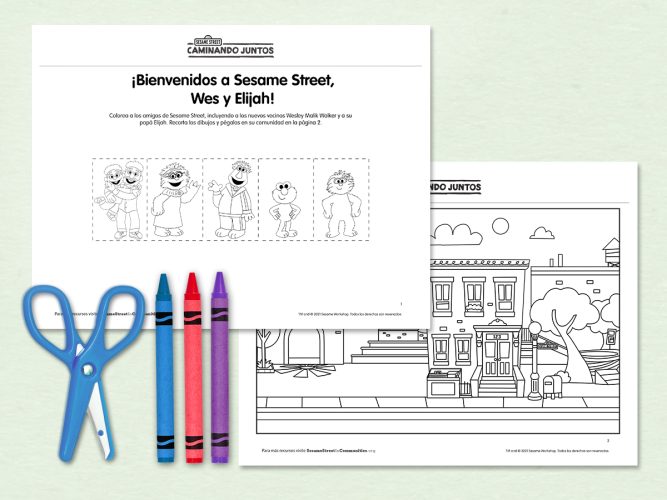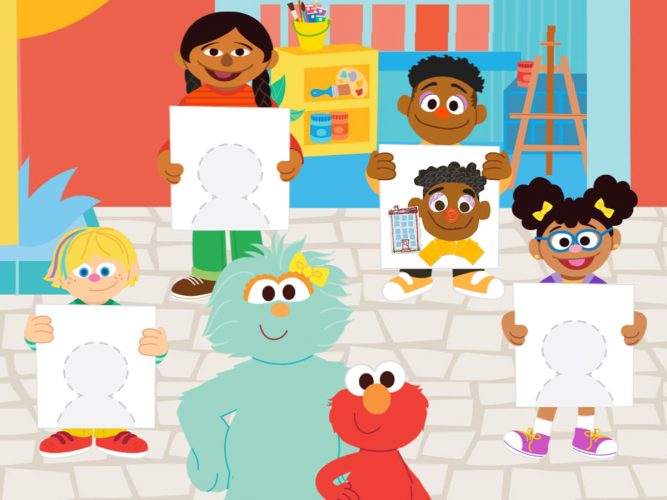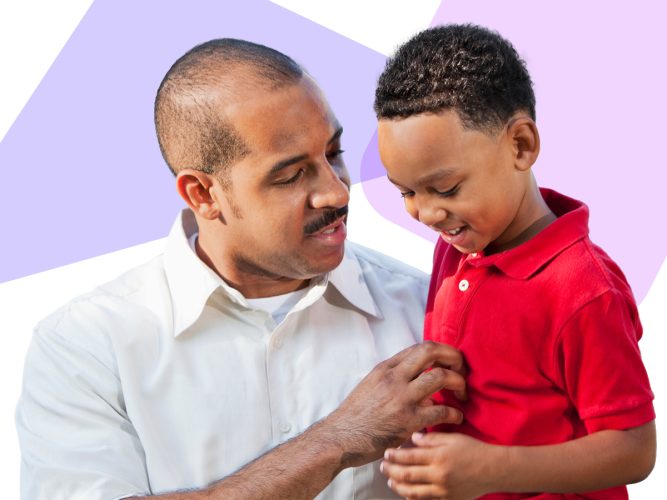
Week 1: Small Steps
Having conversations about race and diversity is an important first step for everyone.
Welcome to Week 1, Day 1 of Room to Grow!
Here you’ll learn strategies to use in the classroom on and off base, as well as to share with families. Materials in this section will help you have important conversations with children around being upstanding citizens who see and appreciate diversity, while also forming a positive self-identity.
Day 1: Classroom Communities
Day 1: Classroom Communities
Classmates, neighbors and friends may all look different on the outside, but that doesn’t mean they can’t care for and respect each other while having lots of fun!
Children are naturally curious and observant. They see differences and name them, which sometimes makes adults uncomfortable out of fear of offending someone. Consider these ways to keep the conversations approachable!
- Invite children to share something that makes them special, and something that makes them similar. Our features make us who we are and needn’t be shied away from. Along with discussing the special things about outward appearances, you can guide children in reflecting on what makes them unique on the inside too.
- Explore what makes a community. Ask children what makes Sesame Street a special place, and things that make your own learning community special. Having a positive outlook of themselves from the inside-out, will help encourage children to see the good in others as well.
Day 2: Provider to Parents
Day 2: Provider to Parents
Today is all about helping parents become better prepared to have conversations on race, regardless of their comfort level. We all start somewhere, and here you will learn strategies to share with caregivers, and provide materials they can use to take the next step in discussing race and identity. This can strengthen relationships between adults in a child’s circle of care.
Watch this brief video about the Lifelong Journey that reminds us that creating an equitable world is a marathon, not a sprint!
The role you play in modeling this conversation is an important one, even if it is new for you. Mistakes happen but the only true misstep is to not begin at all. Progress and growth cannot come without forward movement. Regardless of where you begin, the learning never stops!
Day 3: Fun with Families
Day 3: Fun with Families
Today is all about helping parents playfully engage with children as they develop the language to describe the diversity within their community. As many military families may travel the United States and the world, this is a conversation that benefits everyone. This activity can help remind parents that language matters as children learn to describe themselves and their surroundings, no matter where they live, and learning about who they are can be enjoyable and informative!
Play the activity I Am Me!
Routines are important because they help maintain a sense of comfort through military changes. Establishing them reminds a child of their value and role (to themselves and others), especially in circumstances where military families are experiencing a PCS, TDY, or deployment orders. Change happens, but creating everyday routines give children something familiar to look forward to each day, as well as a sense of control.
Day 4: Professional Practice
Day 4: Professional Practice
Today is all about helping you build racial literacy within yourself and your students. Racial literacy is the knowledge, skills, and awareness needed to talk thoughtfully about race and racism. It’s important to use and teach specific vocabulary with young children, because using shared language means that we can all talk and listen. This is one way to provide everyone the knowledge and skills to better understand and address the complexities of racism in our society, and can help you take preventative rather than reactive steps when issues around race occur. This article can help you teach and model the thoughtful language that comes with heightened awareness, while motivating you to remain open to the different perspectives of others. Having discussions with clear and honest dialogue can make a huge difference!
Consider these additional questions:
- How do you define terms such as race, racism, prejudice, and ally?
- What does it mean to be an upstander?
- What is one strategy you can implement to talk to children about skin color?
- When children make an observation about race, what question(s) can you ask to encourage the conversation? (ie “Why do you think that?”)
- What is an activity you can incorporate to help children celebrate who they are, inside and out?
Day 5: Questions and Reflections
Day 5: Questions and Reflections
Before we respond to the needs of others we can reflect on our own lessons learned.
You may take a moment to jot down thoughts connected to the questions below, or reflect on how your own responses may shape the way that these resources can benefit children and families in your care.
- What did you like about using the resources from this week?
- What challenged you when using the resources from this week?
- What do you hope to address with the resources you’ve explored?
- What might be unique challenges military families face? How can your use of these tools help remind children and their families of their resilience?
Our understanding of race and justice shapes what we teach and learn, and is part of an ongoing process of becoming our best selves. Rather than approaching the idea of advocating for racial justice as a to-do list filled with specific tasks you can check off, it’s important to maintain a mindset of growth. Mistakes will be made, but that is not a reason to stop trying. Progress is still progress even if it’s happening a little bit at a time, but nothing is accomplished if we don’t start somewhere.
This conversation can be daunting because we’re talking about the lives of real people and how we can better honor and affirm their dignity within a racist society. This requires self-reflection, learning and unlearning. The stakes, therefore, feel high, but we can all begin somewhere and make the intentional choice to persevere when challenged or faced with discomfort. As providers, caregivers, and children, there is room for all of us to grow.
— Patricia A. Taylor, Anti-Racism Educator
Congratulations!
You’ve finished the First Week!

.




